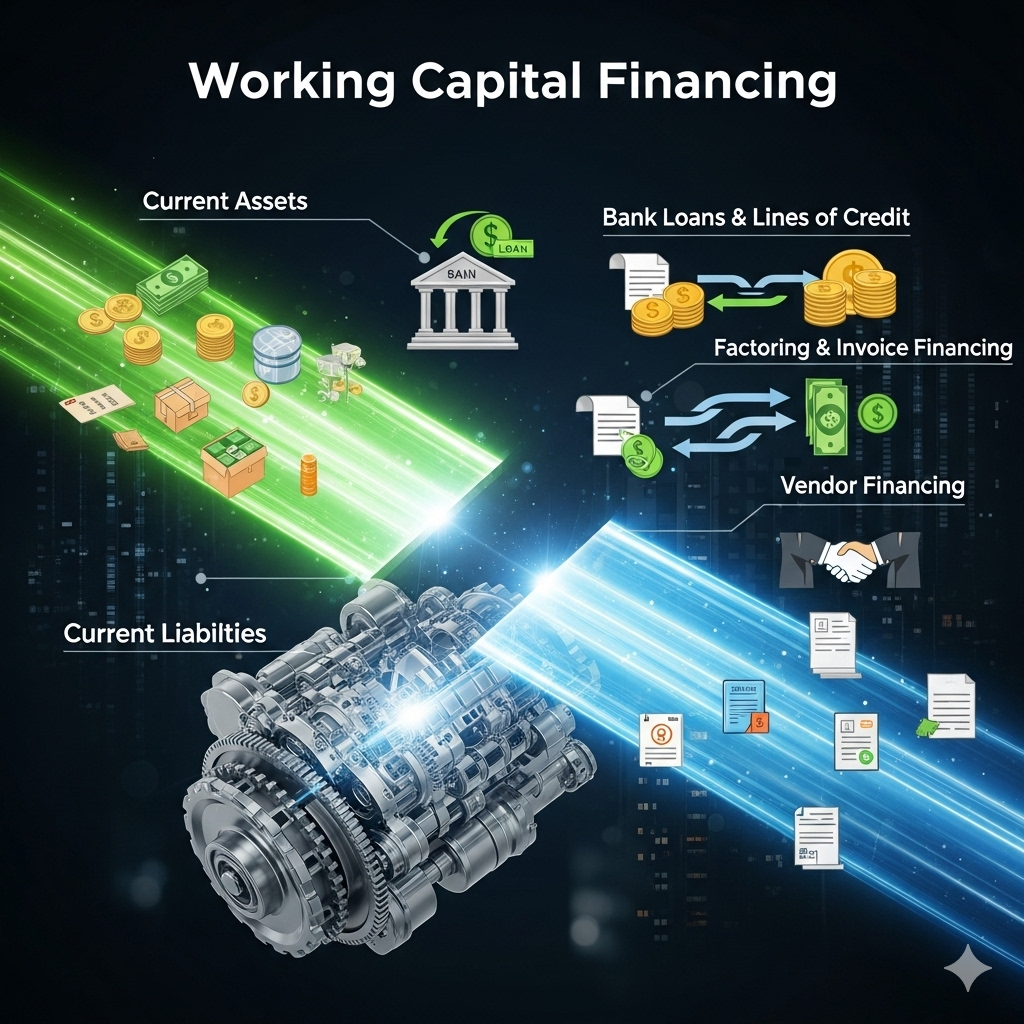Working Capital Financing Strategies
Think of working capital as a company’s financial breathing room—the cash it needs to cover day-to-day operations like paying suppliers, managing payroll, and buying inventory. A healthy amount of working capital is the key to staying afloat and seizing new opportunities. When a business needs more of it, it turns to specific financing strategies to keep the engine running smoothly.
Understanding the Basics
Working capital is simply the difference between a company’s current assets (what it can convert to cash within a year, like accounts receivable and inventory) and its current liabilities (what it owes within a year, like accounts payable). If this number is low or negative, a business can face a cash crunch.
Financing strategies are the tools used to bridge this gap. Choosing the right one depends on your business size, industry, and the specific challenge you’re facing.
Key Working Capital Financing Strategies
1. Short-Term Bank Loans & Lines of Credit
This is the most traditional form of financing. A short-term bank loan is a lump sum borrowed for a specific purpose, like paying for a large inventory order. A line of credit, on the other hand, is a more flexible option. It works like a credit card for your business—you have a set limit and can borrow from it as needed, paying interest only on the amount you use.
- Proof: A small business needing to buy materials for a seasonal rush might use a line of credit to manage cash flow. This allows them to pay for the materials immediately while waiting for sales revenue to come in.
2. Factoring & Invoice Financing
For businesses that sell on credit and have to wait for customers to pay their invoices, this can be a lifesaver. Factoring involves selling your invoices to a third-party company (a factor) for an immediate cash advance. The factor then collects the payment from the customer. Invoice financing is similar, but you use the invoices as collateral for a loan, and you remain responsible for collecting the payment yourself.
- Proof: A tech company in Riyadh, “Aman Tech Solutions,” wins a contract with a large government entity that has a 90-day payment cycle. To pay its developers and cover operational costs without waiting three months, Aman uses an invoice financing service. They get an immediate cash advance on their approved invoice, which they use to fund day-to-day operations. This allows them to take on a new project without any cash flow interruptions.
3. Vendor Financing
This strategy involves managing your accounts payable to your advantage. By negotiating more flexible payment terms with your suppliers—for example, extending your payment window from 30 to 60 days—you can hold onto your cash for longer. This provides a temporary boost to your working capital without having to borrow from a bank.
- Proof: An e-commerce business with high inventory turnover can negotiate longer payment terms with its suppliers. This allows the business to sell its products and collect the cash from customers before it has to pay the supplier, effectively using the supplier’s money to finance its inventory.
Final Thoughts
Working capital isn’t just about having enough money; it’s about having the right amount of liquidity at the right time. By understanding and strategically applying these financing options, businesses can avoid cash shortages and create a solid financial foundation for sustainable growth. The right strategy can turn a cash-flow challenge into a powerful competitive advantage.




